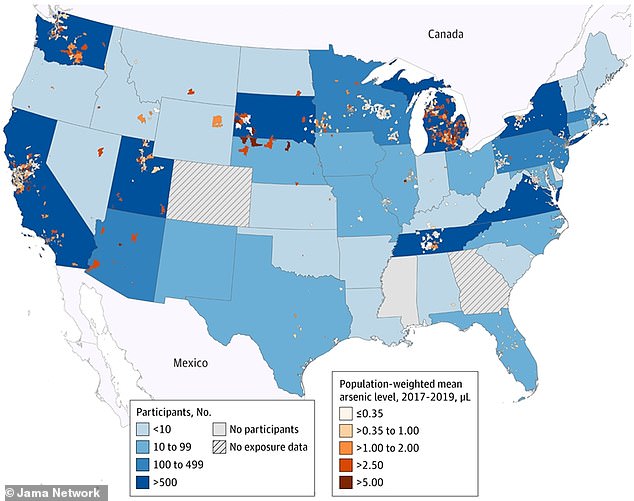
Arsenic Contamination in US Drinking Water: A Growing Public Health Concern
A recent study has uncovered a concerning issue regarding the quality of drinking water across the United States. Scientists have identified that millions of Americans may be regularly exposed to dangerous levels of arsenic, a naturally occurring element found in soil and rock that can seep into groundwater over time. This discovery highlights a serious public health challenge that affects various regions across the country.
The research, based on data collected between 2017 and 2019, mapped population-weighted arsenic levels in community water systems. The findings reveal alarming hotspots in several states, including Michigan, New York, Pennsylvania, Tennessee, Utah, Arizona, California, Oregon, and Washington. In these areas, arsenic levels exceed 5 micrograms per liter (µg/L), which is considered hazardous to human health. The World Health Organization (WHO) recommends a maximum arsenic level of 10 µg/L in drinking water, but studies have shown that even lower levels can increase the risk of cancer, cardiovascular disease, and developmental issues.
Moderate-to-high levels of arsenic, ranging from 1.0 to 5.0 µg/L, were also detected in states such as Ohio, Indiana, Illinois, Missouri, Nebraska, Colorado, New Mexico, Nevada, Texas, and Idaho. While some regions have relatively low overall exposure, the map indicates pockets of chronic contamination that disproportionately affect rural and low-income populations. Many individuals in these areas may be unaware of the risks associated with arsenic in their water supply.
According to estimates, more than two million Americans may be exposed to arsenic in their water, though not all at levels exceeding the Environmental Protection Agency’s (EPA) 10 µg/L limit. The map was created by scientists at Columbia University, who used records from the EPA to assess arsenic levels across specific regions. The team analyzed data from 13,998 participants across 35 sites between 2005 and 2020, focusing on Zip Code Tabulation Areas (ZCTAs).
The highest concentrations of arsenic, exceeding 5.0 µg/L, were found in Michigan’s Lower Peninsula. Industrial and agricultural activities in this region may contribute to the elevated levels. Sheridan Haack, a research hydrologist with the US Geological Survey (USGS), noted that several counties in Michigan have high arsenic levels, particularly in the Thumb region, as well as Oakland, Washtenaw, and Ingham counties.
In New York, the southern tier, especially around Binghamton, features bedrock and soils that contain arsenic-bearing minerals. These conditions can release arsenic into groundwater under certain circumstances. This phenomenon is common in parts of the Northeast, where glacial deposits and sedimentary rock layers can concentrate arsenic.
California’s Central Valley, known for its intensive farming practices, also emerged as a hotspot. Other critical areas include Pennsylvania’s western counties near Pittsburgh, Tennessee’s eastern Appalachian regions, Utah’s northern Cache and Weber counties, Arizona’s southwest near Yuma, and Oregon’s Willamette Valley.
For concerned citizens, there are options to reduce arsenic exposure. At-home filters can help mitigate the risk, although popular brands like Brita may not effectively remove arsenic. Instead, people can consider reverse osmosis systems, activated alumina filters, or anion exchange resins, according to EcoWater Systems.
A 2023 study by a separate team from Columbia University linked arsenic in drinking water to an increased risk of heart disease. Researchers examined the health records of 100,000 Californians over 23 years and compared the data to their estimated exposure to arsenic in drinking water. They found that individuals exposed to high levels of the toxic metal for a decade or more were 42% more likely to develop heart disease.
Dr. Tiffany Sanchez, the study author and an environmental and molecular epidemiologist, suggested that current policies regarding arsenic levels in drinking water may need re-evaluation. "Our results are novel and encourage a renewed discussion of current policy and regulatory standards," she said. This finding underscores the urgent need for updated guidelines to protect public health.
Post a Comment